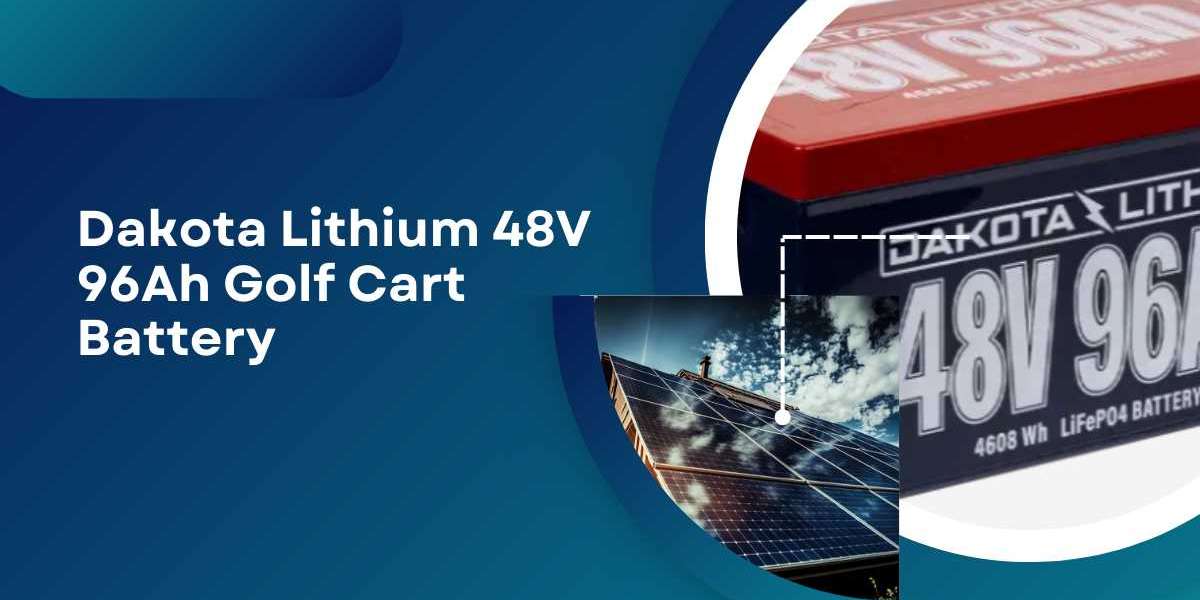When it comes to the performance of your golf cart or electric vehicle, one of the most critical components is the cart battery. Whether you're using a cart for golfing, leisure, or work purposes, the battery powers your vehicle, enabling it to run efficiently and effectively. But with so many different types of cart batteries available on the market, how do you know which one is the best fit for your needs?
This guide will walk you through everything you need to know about cart batteries, from the different types to maintenance tips, and how to choose the right one for your specific requirements. By the end, you’ll be armed with the knowledge you need to keep your cart running smoothly for years to come.
What Are Cart Batteries?
At its core, a cart battery is a rechargeable power source that fuels the electrical system of a golf cart or similar vehicle. These batteries are designed to store energy and release it to power the cart’s motor, lights, and other components.
While cart batteries are essential for electric-powered carts, not all batteries are the same. Factors like voltage, capacity, lifespan, and the type of cart you own will all affect your choice of cart battery. Selecting the right one can make a significant difference in how your cart performs.
Types of Cart Batteries
When choosing a cart battery, understanding the various types is crucial. The two most common types are lead-acid and lithium-ion batteries. Here’s a breakdown of each:
1. Lead-Acid Batteries
Lead-acid batteries are the traditional option for many golf carts. They have been around for decades and are well-known for their affordability and reliability.
Pros:
- Affordable upfront cost
- Well-suited for low-energy demands
- Easy to replace and maintain
Cons:
- Shorter lifespan (typically 3-5 years)
- Heavier weight
- Require more frequent maintenance (water levels, cleaning)
2. Lithium-Ion Batteries
Lithium-ion batteries are a newer option for cart batteries. They are lighter, longer-lasting, and require less maintenance compared to their lead-acid counterparts.
Pros:
- Longer lifespan (up to 10 years or more)
- Lighter and more efficient
- Requires less maintenance
- More environmentally friendly
Cons:
- Higher upfront cost
- May require specialized chargers
How to Choose the Right Cart Battery for Your Cart
When selecting a cart battery, it’s important to consider a few key factors that will affect performance:
1. Voltage
The voltage of your cart battery determines the power it can provide. Most golf carts use 36V or 48V batteries, but it’s crucial to match the battery voltage with your cart’s specifications.
2. Capacity
Capacity is measured in amp-hours (Ah), and it tells you how much energy the battery can store. A higher capacity means more runtime before needing to recharge, making it ideal for longer trips.
3. Lifespan
As mentioned earlier, cart batteries have varying lifespans. Lead-acid batteries generally last around 3-5 years, while lithium-ion batteries can last up to 10 years or more. Investing in a longer-lasting battery can save you money in the long run.
4. Maintenance
Lead-acid batteries require regular maintenance, including checking water levels and cleaning terminals. Lithium-ion batteries, on the other hand, require little to no maintenance.
How to Maintain Your Cart Battery
Proper maintenance can extend the lifespan of your cart battery. Follow these simple tips to ensure that your battery stays in top shape:
- Regular Charging – Don’t let the battery run down completely. Charge it regularly to maintain its capacity.
- Check Water Levels – For lead-acid batteries, check the water levels monthly and refill with distilled water if necessary.
- Clean Terminals – Dirty terminals can cause poor connections. Clean them regularly with a baking soda solution.
- Avoid Deep Discharge – Try not to discharge the battery below 20% to avoid damaging it.
- Store Properly – If you plan to store your cart for a while, keep the battery charged to around 50% and store it in a cool, dry place.
How to Tell When Your Cart Battery Needs Replacing
Like all batteries, cart batteries will eventually wear out. Here are some signs that it may be time to replace yours:
- Reduced Run Time: If your cart isn’t lasting as long as it used to on a single charge, the battery may be losing its capacity.
- Slow Acceleration: If the cart struggles to accelerate or feels sluggish, it could be a sign of a weak battery.
- Frequent Charging: If you find yourself charging the battery more often than usual, it may not be holding a charge effectively.
The Cost of Cart Batteries
The cost of a cart battery can vary greatly depending on the type, brand, and capacity. On average, lead-acid batteries can cost anywhere from $500 to $1,200, while lithium-ion batteries can range from $1,500 to $3,000 or more.
It’s important to weigh the upfront cost with long-term savings. While lithium-ion batteries are more expensive initially, their longer lifespan and lower maintenance needs make them a more cost-effective option in the long run.
Cart Battery Comparisons: Lead-Acid vs Lithium-Ion
When comparing cart batteries, the debate often boils down to lead-acid vs lithium-ion. Here’s a side-by-side comparison:
| Feature | Lead-Acid Battery | Lithium-Ion Battery |
|---|---|---|
| Upfront Cost | Lower ($500 - $1,200) | Higher ($1,500 - $3,000) |
| Lifespan | 3-5 years | 10 years or more |
| Maintenance | Frequent (water checks, cleaning) | Minimal (little to no upkeep) |
| Weight | Heavier | Lighter |
| Charging Time | Longer (8-12 hours) | Faster (4-6 hours) |
| Environmental Impact | Higher (lead is toxic) | Lower (more eco-friendly) |
As you can see, while lead-acid batteries have a lower initial cost, the benefits of lithium-ion batteries, including a longer lifespan, lighter weight, and less maintenance, make them an appealing choice for many cart owners.
Tips for Extending the Life of Your Cart Battery
Want your cart battery to last as long as possible? Follow these tips:
- Charge after every use, but avoid overcharging.
- Keep the battery clean and dry.
- Avoid leaving your cart exposed to extreme temperatures for long periods.
- Use a quality charger designed for your specific battery type.
- Perform regular maintenance checks, especially for lead-acid batteries.
Conclusion
In summary, cart batteries are essential for powering your golf cart, electric vehicle, or similar equipment. By understanding the different types of batteries available and how to maintain them, you can ensure that your cart runs smoothly for years to come. Whether you choose a lead-acid battery for its affordability or a lithium-ion battery for its longevity and low maintenance, the key is to choose the right one for your needs.
Taking proper care of your cart battery will not only extend its life but also enhance the overall performance of your cart. With the right knowledge and attention, you can enjoy hassle-free rides and get the most out of your investment.
Frequently Asked Questions (FAQs)
1. How long do cart batteries last?
The lifespan of a cart battery depends on its type. Lead-acid batteries typically last 3-5 years, while lithium-ion batteries can last up to 10 years or more.
2. Can I use a lead-acid battery in a lithium-ion cart?
No, it’s important to use the type of battery recommended by the manufacturer of your cart to avoid damage to the electrical system.
3. How much should I expect to pay for a cart battery?
Lead-acid batteries usually cost between $500 and $1,200, while lithium-ion batteries are priced between $1,500 and $3,000.








